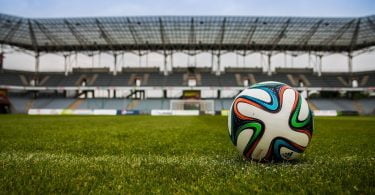Whether we like it or not, it is something that has changed in our beautiful game.
Whether we like it or not, it is something that has changed in our beautiful game. No longer is the strength of a football club based upon the wealth of talent produced in the area, rather the wealth of the international billionaire who sits atop the club’s hierarchy.
The, frankly preposterous, amount of money invested into certain teams are enough to buy success and trophies. Just look at Chelsea circa 2005 and Man City circa 2012.
However, is there an alternative method to investing in football clubs? Do owners have to throw money at the world’s best players to become successful? In short, no.
Much like the rise of any football club, Southampton’s meteoric leap from the bottom of League One with -10 points on the board in August 2009 to a stable 14th in the Premier League by May 2013 was down to one thing—money.
With the Saints on the brink of extinction from administration in July 2009, Swiss businessman Markus Liebherr, with a reported personal wealth of £3,000 million, swooped in to save the club. Liebherr appointed shrewd Italian Nicola Cortese as Executive Chairman to control the day-to-day running of the club and help achieve the long term vision—Premier League football in five years.
How farfetched did that seem?
The Saints had to rebuild from the bottom, with manager Alan Pardew, Liebherr and Cortese ringing the changes. Aging players Jason Euell, Stern John, Grezgorz Rasiak were all shown the door in favour of players bought in with experience in getting promoted from the lower leagues and building a foundation for the future.
Spending a rumoured £3 million on transfers for a League One team seems insane. However, investing in the likes of Morgan Schneiderlin, Jose Fonte and Rickie Lambert, all of whom have been mainstays in the Saints Premier League side, seems like clever business. The purchase of Lambert for £1 million (a sum of money that barely covers the price of Fernando Torres’ pinkie) seems like a masterstroke.
Southampton’s academy is one that is constantly eulogised by the press and pundits alike. You never find an article about a Saints youth player without reading the phrase “from the academy that produced the likes of Gareth Bale, Theo Walcott and Alex Oxlade-Chamberlain.” To keep that list of young starlets constantly refreshing, the club have made a significant investment in improving the already excellent youth facilities. The Staplewood training ground has gone under a state of the art re-design to ensure that the future remains bright for the English youngsters coming through the prolific academy.
Investing in the right players and in the future has given Southampton a squad that has grown together and has learned to play together. Compare this to the likes of QPR, who spent almost the entirety of the 2012/13 languishing in the bottom three, despite significant squad investment. The R’s fielded 30 different players last season, 16 of whom had been brought into the club that season. Despite big money signings of Loic Remy, Julio Cesar, Chris Samba, Esteban Granero and many more, Rangers looked (and played) like a group of individuals.
Don’t get me wrong, Southampton spent a significant amount of money prior to promotion into the Premier League, smashing the club record transfer fee on two occasions with the signings of Jay Rodriguez and Gaston Ramirez. However, with these high priced transfers added to the already stable squad, former manager Nigel Adkins felt there was no need to over spend.
Despite the near £20 million worth of transfers, the South Coast side still managed to turn a £900,000 profit in the first half of their first season back in the Premier League. With a solid 14th place finish in the league and with the new television deal coming in next season, the financial future of the club is looking promising.
With financial fair play on everybody’s minds, the “quick success” method employed by the likes of Chelsea and Man City could be heading out of the window and a more sustainable financial success structure need to be implemented.
Is it possible to build a Premier League winning team without spending tens of millions? Unlikely. However financially well-structured clubs might catch the big-spenders off guard when the new regulations take away some of the spending powers of the richest clubs and Southampton seem poised for a sustained assault on the top half of the Premier League.
What do you think? Will Southampton’s investments be beneficial for next season? Have your say in the comments section below, on Facebook or on Twitter.








